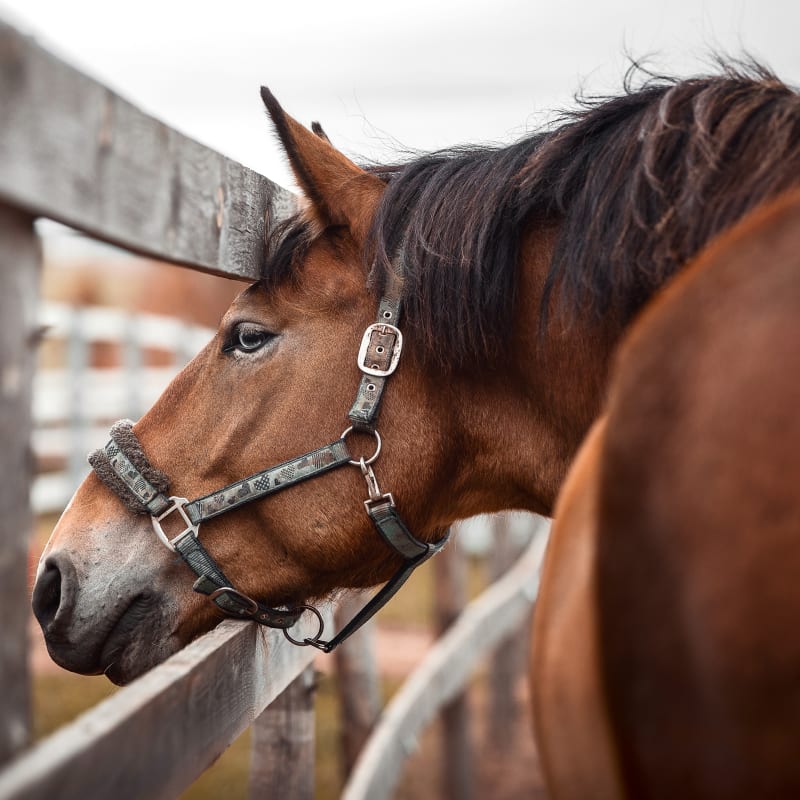Surgical Services for Horses
The equine team at our Exeter facility both general and specialized surgical services for major and minor cases, elective and emergency, and inpatient and outpatient procedures.
Our veterinary team's ultimate goal is to provide our patients with superior perioperative care.
We have experience with all breeds and disciplines, as well as expertise in all areas of surgery, including soft tissue and orthopedic procedures.

What to Expect With Equine Surgery
We always keep you fully informed about why we are recommending a surgical procedure, the length of recovery, and any post-operative care your horse will need at home.
Surgical Procedures at Pacific Crest Equine
We perform medical and emergency surgeries to help treat diseases and conditions in horses or to repair injuries sustained through trauma.
Our San Joaquin Valley vets routinely perform the following elective and non-elective surgeries:
- Soft Tissue and Colic Surgery
Soft tissue surgery includes surgery of the abdomen, urogenital tract, respiratory tract, mouth, and skin.
Colic and respiratory operations are the most common soft tissue surgeries that we perform. Our vets can assess your horse's condition and offer surgical solutions if it is in the best interest of your horse.
Our equine vets are available during our clinic hours to carry out corrective colic surgery and intensive post-operative care, which is vital for survival.
- Reproductive Surgery
A full range of reproductive surgical procedures can be carried out either at your farm through our ambulatory services or at our hospital. These include:
Mares: Cesarean section and other reproductive surgical emergencies are available along with the removal of endometrial cysts. Urogenital surgery, including Caslick's operation and other perineal surgery, ovariectomy, removal of granulosa cell tumors, ovarian hematoma, abscess or cysts, repair of uterine torsion, correction of foaling injuries, and removal of bladder stones.
Colts/Stallions: We perform castration and correction of inguinal hernias. We also offer urogenital surgery, including cryptorchid surgery (removal of retained testicles), removal of penile or testicle tumors, amputation of penis, and removal of bladder stones.
- Arthroscopy
Arthroscopy is a technique used by equine surgeons to evaluate and treat diseases within joints. Similar techniques are also used to evaluate and treat diseases within tendon sheaths (tenoscopy) and bursae (bursoscopy).
A narrow, rigid instrument called an endoscope, is placed through a small incision to examine the inside of a joint, tendon sheath, or bursa. The image is then transmitted to a camera for viewing on a monitor. Specially designed surgical instruments are passed through separate small incisions to assist in the treatment of disease within these structures.
- Endoscopy
Endoscopic surgery of the abdomen and thorax can be very useful in horses for a variety of different problems. It allows visualization and treatment of parts of the abdomen (laparoscopy) and thorax (thoracoscopy) which can be difficult to reach using other forms of surgery and has the significant advantages of being able to be performed with the horse standing and with minimal incisions.
- Wounds
Wounds occur when living tissue has been cut, broken, burnt, torn, or otherwise damaged.
These wounds must be cleaned, disinfected, and appropriately cared for by a qualified veterinarian as soon as possible.
The Surgery Process
We understand that the prospect of equine surgery can be frightening. Please be assured that we recommend surgery only when it is in your horse's best interests.
Our cutting-edge surgical suite includes a hydraulic surgery table and an overhead patient hoist system. Horses are induced and recovered from general anesthesia while wearing a padded helmet in a large padded and quiet recovery stall under direct observation.
Standing vs. Traditional Surgery
Most large animal surgeries are performed on standing, awake patients and are typically to repair traumatic injuries, such as lacerations. Other common procedures are castration, reproductive surgery, endoscopic surgery of the upper respiratory tract, and minor hoof and lower leg procedures.
Recovery from general anesthesia is the single largest risk for horses after surgery, and standing surgery avoids most of those risks. Also, some surgical procedures are easier to perform on a standing patient. It is in the patient’s best interest to use a standing procedure whenever possible.
There are certain cases where standing surgery simply cannot be performed, such as colic surgery. Our veterinary team has extensive experience with equine surgery and will do everything they can to reduce risks.

